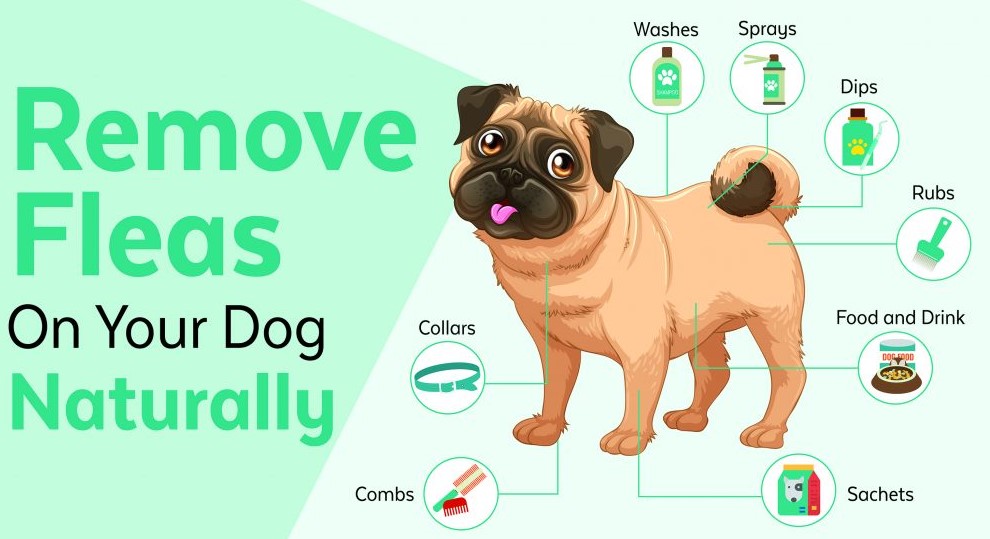BOURSESSENEGAL – Fleas can be a persistent nuisance for pet owners and homeowners alike. Knowing how to get rid of fleas effectively is crucial for maintaining a healthy and comfortable living environment. In this guide, we’ll explore proven strategies for tackling fleas, from understanding their life cycle to implementing various control methods. By the end, you’ll have the knowledge you need to eliminate these pests once and for all.
Understanding Fleas and Their Life Cycle
What Are Fleas?
Fleas are small, wingless insects that feed on the blood of mammals and birds. They thrive in warm, humid environments and can jump impressive distances—up to 7 inches vertically! Their presence can cause discomfort for both pets and humans, leading to itching and skin irritations.
The Flea Life Cycle
To effectively combat fleas, it helps to understand their life cycle, which consists of four stages: egg, larva, pupa, and adult.
- Eggs: Flea eggs are tiny and usually fall off the host into the environment.
- Larvae: These hatch from eggs and live in carpets, cracks, and other hidden areas.
- Pupae: Larvae spin cocoons and can remain dormant for several months.
- Adults: Once conditions are right, adult fleas emerge, ready to feed and reproduce.
By targeting each stage of the life cycle, you can disrupt their growth and eliminate them effectively.
Step-by-Step Guide: How to Get Rid of Fleas
1. Treat Your Pets
Regular Grooming
Start with your pets. Use a flea comb to remove adult fleas and their eggs from your furry friends. Make this a regular part of your grooming routine. You’ll find it easier to manage any infestations early on.
Flea Treatments
Consider using veterinarian-recommended flea treatments. Options include topical treatments, oral medications, and flea collars. Be sure to follow the instructions carefully and consult your vet for the best choice for your pet’s health and lifestyle.
2. Clean Your Home
Vacuuming
Vacuuming is one of the most effective ways to reduce flea populations. Focus on areas where your pets spend the most time, such as carpets, rugs, and upholstery. Don’t forget to vacuum your furniture, as fleas and their eggs can hide there too.
Wash Bedding
Washing your pet’s bedding and your own can help eliminate fleas and their eggs. Use hot water and dry the items on high heat. This combination ensures you kill any fleas present.
3. Treat Your Home
Insecticides
If you still notice fleas after cleaning, consider using insecticides specifically designed for flea control. Look for products containing ingredients like permethrin or imidacloprid. Always read the label and follow the application instructions carefully.
Diatomaceous Earth
Another natural option is diatomaceous earth, a powder made from fossilized algae. When sprinkled in areas where fleas congregate, it dehydrates and kills them. Make sure to use food-grade diatomaceous earth and apply it lightly.
4. Yard Maintenance
Outdoor Treatment
If your pets spend time outdoors, treat your yard as well. Fleas can thrive in grassy and shaded areas. Use outdoor insecticides designed for flea control, or consider using nematodes—microscopic worms that feed on flea larvae.
Regular Mowing
Regularly mow your lawn and trim shrubs to minimize the areas where fleas can hide. Keeping your yard neat can significantly reduce the chances of an infestation.
Prevention Tips to Keep Fleas at Bay
1. Regular Check-Ups
Regular veterinary check-ups can help ensure your pets stay flea-free. Ask your vet about preventive treatments to keep fleas at bay year-round.
2. Maintain Cleanliness
Keeping your home clean plays a vital role in flea prevention. Regularly vacuum and wash bedding to minimize the chances of fleas taking up residence.
3. Seasonal Treatments
Fleas can thrive in warmer months, so consider seasonal treatments during peak flea season. This proactive approach can prevent infestations before they occur.
4. Monitor Your Pets
Keep an eye on your pets for signs of fleas, such as excessive scratching or biting. Early detection allows for quick action, making it easier to manage the problem.
When to Seek Professional Help
If your flea problem persists despite your best efforts, it may be time to call in a professional pest control service. They have access to stronger insecticides and can help identify any underlying issues contributing to the infestation.
Conclusion: Your Path to a Flea-Free Home
Knowing how to get rid of fleas requires a multi-faceted approach. By treating your pets, cleaning your home, and maintaining your yard, you can effectively eliminate these pests. Remember to stay vigilant and implement preventive measures to keep your living environment comfortable and flea-free. With these strategies in place, you can enjoy peace of mind and a healthier home for you and your pets.
REFERENCE : https://www.health.com/



